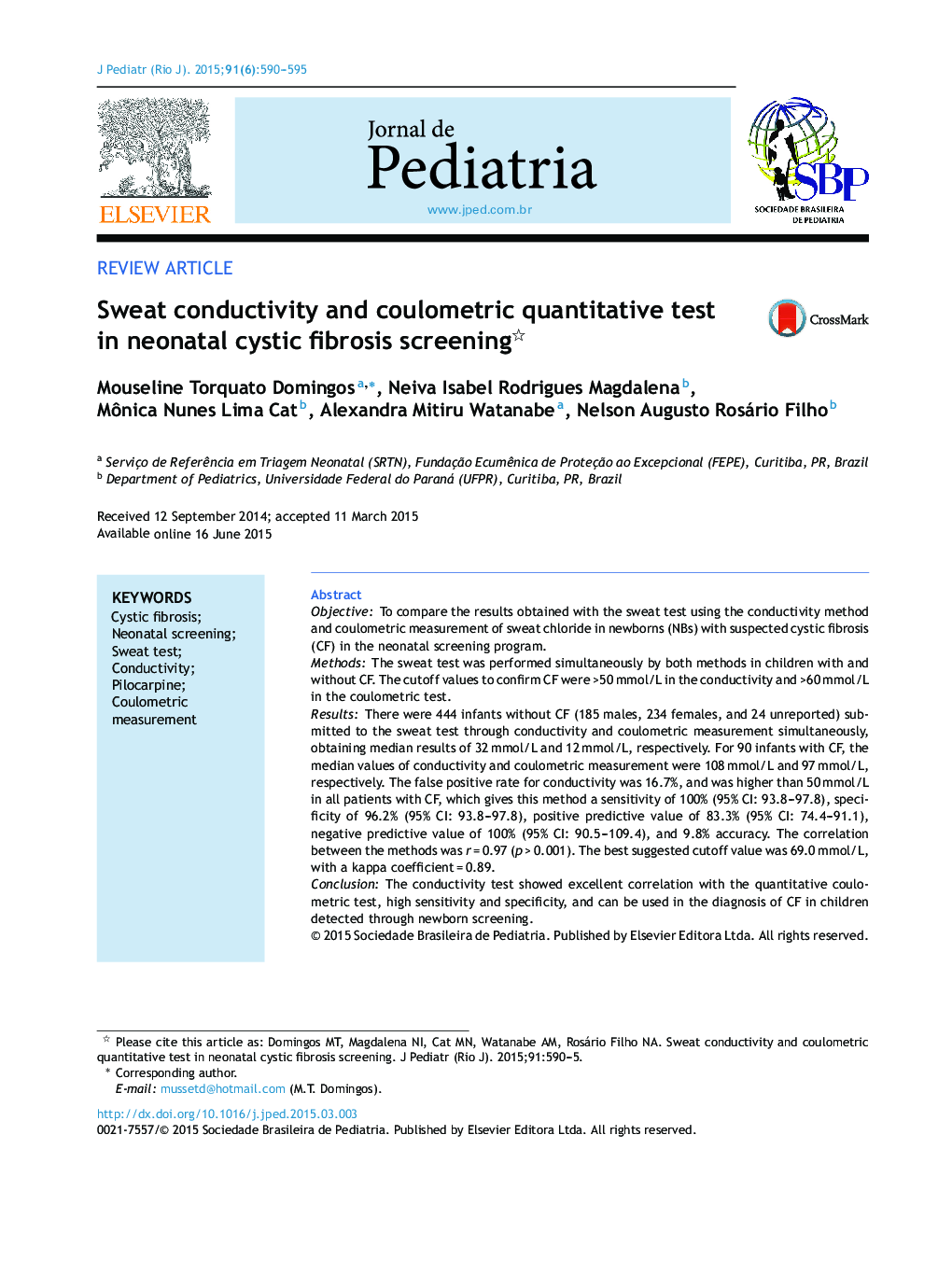| Article ID | Journal | Published Year | Pages | File Type |
|---|---|---|---|---|
| 4153944 | Jornal de Pediatria | 2015 | 6 Pages |
ObjectiveTo compare the results obtained with the sweat test using the conductivity method and coulometric measurement of sweat chloride in newborns (NBs) with suspected cystic fibrosis (CF) in the neonatal screening program.MethodsThe sweat test was performed simultaneously by both methods in children with and without CF. The cutoff values to confirm CF were >50 mmol/L in the conductivity and >60 mmol/L in the coulometric test.ResultsThere were 444 infants without CF (185 males, 234 females, and 24 unreported) submitted to the sweat test through conductivity and coulometric measurement simultaneously, obtaining median results of 32 mmol/L and 12 mmol/L, respectively. For 90 infants with CF, the median values of conductivity and coulometric measurement were 108 mmol/L and 97 mmol/L, respectively. The false positive rate for conductivity was 16.7%, and was higher than 50 mmol/L in all patients with CF, which gives this method a sensitivity of 100% (95% CI: 93.8–97.8), specificity of 96.2% (95% CI: 93.8–97.8), positive predictive value of 83.3% (95% CI: 74.4–91.1), negative predictive value of 100% (95% CI: 90.5–109.4), and 9.8% accuracy. The correlation between the methods was r = 0.97 (p > 0.001). The best suggested cutoff value was 69.0 mmol/L, with a kappa coefficient = 0.89.ConclusionThe conductivity test showed excellent correlation with the quantitative coulometric test, high sensitivity and specificity, and can be used in the diagnosis of CF in children detected through newborn screening.
ResumoObjetivoComparar os resultados obtidos no teste do suor pelo método da condutividade e a dosagem coulométrica de cloreto no suor em recém nascidos (RN) suspeitos da triagem neonatal para fibrose cística (FC).MétodosO teste do suor foi realizado simultaneamente pelos dois métodos em crianças com e sem FC. Os valores de corte para confirmar FC foram na condutividade > 50 mmol/L e no teste coulométrico > 60 mmol/L.ResultadosQuatrocentos e quarenta e quatro RN sem FC (185 do sexo masculino, 234 femininos e 24 não informado) realizaram o teste do suor por condutividade e dosagem coulométrica simultaneamente e obtiveram resultado mediano de 32 mmol/L e 12 mmol/L respectivamente. Para os noventa RN com FC os valores medianos de condutividade e dosagem coulométrica foram 108 mmol/L e 97 mmol/L respectivamente. O índice de falso positivo para condutividade foi de 16,7% e em todos os pacientes FC foi superior a 50 mmol/L conferindo ao método 100% de sensibilidade (IC 95% = 93,8 a 97,8), especificidade de 96,2% (IC 95% = 93,8 a 97,8), valor preditivo positivo 83,3 (IC 95% = 74,4 a 91,1), valor preditivo negativo 100% (IC 95% = 90,5 a 109,4) e acurácia 9,8%. A correlação entre os métodos foi de r = 0,97 (p > 0,001).O melhor valor de corte sugerido foi de 69,0 mmol/L, coeficiente de kappa = 0,89.ConclusãoO teste da condutividade apresentou excelente correlação com o quantitativo coulométrico, alta sensibilidade e especificidade, podendo ser utilizado no diagnóstico da FC em crianças detectadas pela triagem neonatal.
